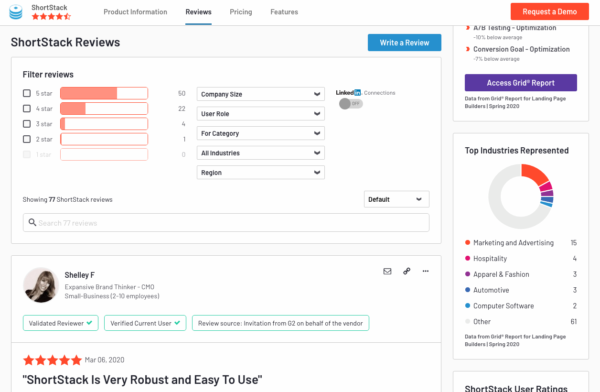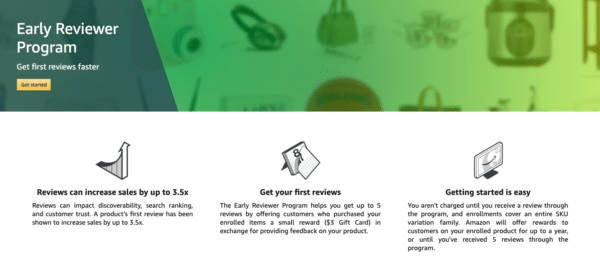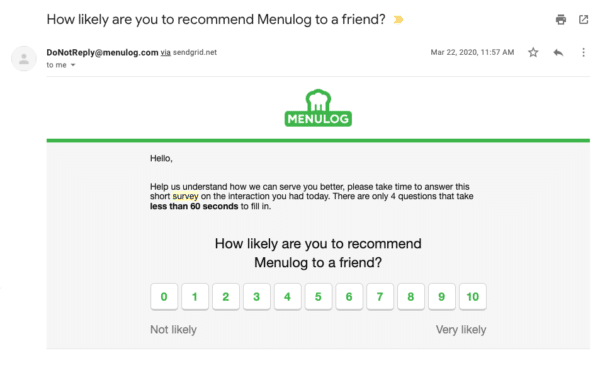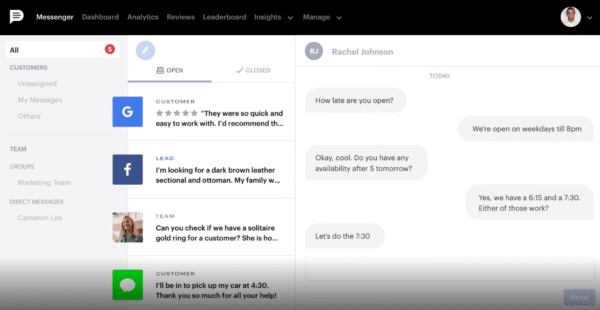How to Ask Customers For Reviews and Recommendations (5 Tips and Tactics)

Learn how to ask customers for reviews and recommendations to boost your business's success and build trust with prospects.
Are you daunted by the thought of asking customers for reviews?Maybe you’ve tried to ask in the past and have been rejected…Or perhaps you feel uncomfortable with the thought of asking a paying customer for something in return - after all, they’ve just paid you for a good or service.But if you don’t have an active customer review process in place, things need to change. Reviews are important to the success of your business. Extremely important.Research from Spiegel Research Center found that companies that display reviews on their website increase conversion rates by 270%.When it comes to B2B brands, 92% of buyers are more likely to purchase what you sell after reading a trusted review. For B2C? That number jumps to 97%.Despite these compelling statistics, many brands still don’t ask customers for reviews anywhere near enough. And if they do, they’re doing it all wrong. In many cases, they’re asking too soon or in a way that deters customers from following through.
Should you ask for customer reviews?
The simple answer to that question is - YES.It doesn’t matter if you sell software, sunglasses, or multi-million dollar consulting engagements. Reviews, recommendations, and testimonials will aid during the trust-building process with new prospects.In fact, the process of attaining a review reinforces the positive experience of a customer and increases the chance of a repeat purchase or direct referral. You stay top-of-mind with happy customers.Of course, the type of recommendation you ask for will vary depending on your business. Some businesses may see more benefit in getting Amazon reviews, while others care more about reviews on Facebook or Google.For us at ShortStack, we see value in getting reviews on third-party comparison websites, such as G2. Our potential customers regularly use these platforms to research and compare SaaS products:

ShortStack on G2.It comes down to prioritizing the review platforms that are most suited to your business and focusing your efforts on obtaining recommendations where it counts.
How to Ask Customers For Reviews and Recommendations
Still not sure how to approach customers and ask for a review? Here are some tips to help you out.
Tip #1 - Exceed Expectations
Before you ask a customer (or anyone) for a review or recommendation, you must exceed their expectations.You want to deliver an exceptional product or service and an unforgettable experience. Something that goes so far above expectations that they feel compelled to tell their friends and family about it.As you can imagine, there is no point in asking someone for a recommendation who has just had a bad experience with your brand. I’m still amazed at how many review requests I get from brands before I’ve even received the product I ordered! That’s just nuts.For example, the team at ShortStack recently collaborated with a client to produce a case study about their experience using the ShortStack software and the results they achieved. At the time of asking for the recommendation, this client (Precious Moments) had just run an instant win contest that generated 22,000 leads. This outcome had exceeded their expectations and made it the optimal time to ask for a recommendation.Here is a screenshot of the landing page they used for the campaign using ShortStack’s Instant Win Giveaway Template:

Instant win contest example.
Tip #2 - Use Marketing Automation
Marketing automation is a key component of a successful customer review strategy. While a manual process can work initially to get a handful of reviews, it’s simply not scalable.Automated emails and chatbot messages are the two most common ways to start automating the process of asking customers for reviews. Of course, it’s a balancing act. Oftentimes automation can come across as impersonal and leave customers disenfranchised with a brand.To be effective, your automated review process needs to be personalized and triggered by key events. For example, a set period of time after a customer receives a product, or once a specific criteria is met in the relationship that determines a positive experience.This automated email from BarkBox is an excellent example of engaging with a customer in a non-confrontational way.

BarkBox email asking for customer feedback.By asking for an in-email rating, They are given a chance to automate a review email if the customer chooses a positive score. If the rating is low, they can work with the customer to improve their service.
Tip #3 - Give an Incentive
The reality is, most of your clients and customers need a compelling reason (and a push in the right direction) to give you a recommendation.Of course, there will be a small portion of people who go out of their way to leave a review out of sheer goodwill. But the majority of your customers won’t even think about it. If they do, they might not find the time to do so without the offer of an incentive.Discounts, coupons, or other rewards are a great way to encourage your customers to leave a review of your business. You want all of your reviews to be real and authentic - so you should give these rewards to anyone willing to leave a review, even if it’s negative.For example, Amazon has an “Early Reviewer” program. With this program, sellers on the Amazon marketplace can offer customers an Amazon coupon in exchange for a review of their product purchase. Amazon automates the whole process, and the seller pays a fee until they receive five reviews of their product.

Amazon's Early Reviewer Program.If Amazon is giving incentives to obtain reviews, you know it’s a strategy that works.
Tip #4 - Make it Easy
When asking for a review from your customers, the process needs to be seamless. The more effort the customer needs to put into the recommendation, the less chance they will do it.The example I gave above from BarkBox shows just how easy it can be to gather feedback from people. You can remove friction points by automating the review process with one-click feedback surveys that guide users through a series of simple questions, capturing the data at each point, and then giving them the chance to provide further detail if they want.Another tip for helping your customers leave reviews is to provide templates or personalized review guides. For example, if you’re a B2B company, offer to write a draft of the testimonial or recommendation for your customers and allow them to edit and post it themselves. This will save them a ton of time and increase the chance of the recommendation making it into the public eye.Food delivery service, Menulog, has taken a similar approach to BarkBox in the email below.

Menulog email making it easy for customers to provide feedback.After selecting a rating from the email, you are then taken to a simple five-question survey where they capture further feedback and open up the opportunity for a review of their app.
Tip #5 - Go Multi-Channel
As you probably know all too well, email inboxes are overflowing with requests from brands - your attempt at capturing a review could easily get lost in that noise.Aim to take your customer review process multi-channel for better results. For example, as well as automated email follow-ups, utilize retargeting ads, personalized one-to-one emails, chatbot messages, and even SMS. By gaining visibility across multiple channels, you are reducing the risk that your request goes unnoticed. Podium, for example, enables you to send customer messages across several channels, respond automatically, and identify when a customer leaves a review.

The Podium multi-channel messaging platform.
Conclusion
No matter what your brand sells - social proof in the form of customer reviews and recommendations is a critical part of building trust with prospects. Too many brands leave the review capture process to chance.Instead, you should wrestle back control of this ecosystem by setting up an automated customer review process that spans several channels, offers incentives, and engages with customers on a personal level.Once you have a review process in place, much like a sales process, you can optimize and improve it to get more favorable recommendations for your business.




